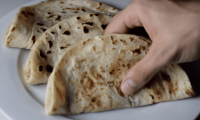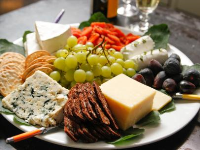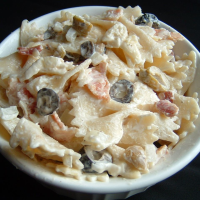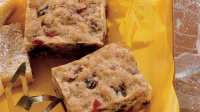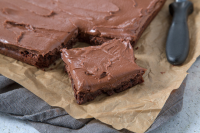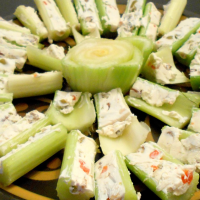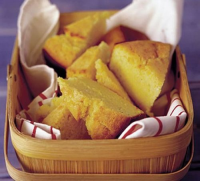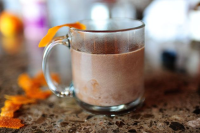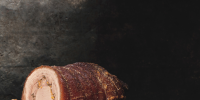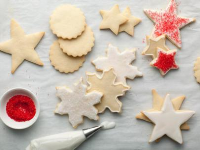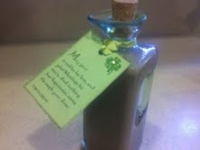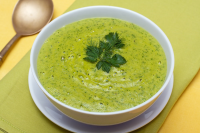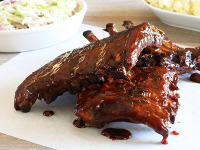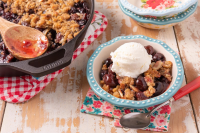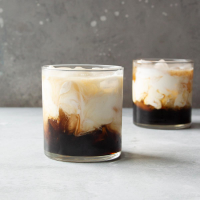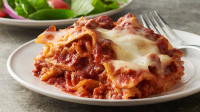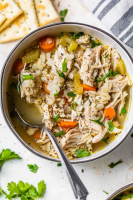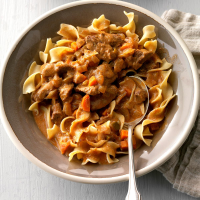HOW TO MAKE SOUFFLé - NYT COOKING
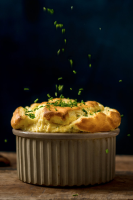
The soufflé turns workaday eggs into a masterpiece. Melissa Clark explains how to conquer this hallmark of French cooking.
Provided by Melissa Clark
Steps:
- In “Mastering the Art of French Cooking,” their profoundly influential 1961 cookbook, Julia Child, Simone Beck and Louisette Bertholle describe the soufflé as the “epitome and triumph of the art of French cooking.” A half-century later, soufflé remains as vital as ever, as successive generations of chefs revisit and refresh the classic recipe. A souffle has two main components, a flavorful base and glossy beaten egg whites, and they are gently folded together just before baking. The word itself comes from “souffler,” meaning “to breathe” or “to puff,” which is what the whites do to the base once they hit the oven’s heat. The base may be made either savory or sweet. Savory soufflés usually incorporate cheese, vegetables, meat or seafood and are appropriate for a light dinner or lunch, or as a first course. They require a substantial and stable base, in the form of a cooked sauce that often involves butter, egg yolks and some kind of starch (flour, rice or cornstarch). Sweet soufflés, with fruit, chocolate or liquors, make spectacular desserts. The base can be made from a fruit purée, or a sweet, rich sauce. Soufflés are found all over France, with each region applying its own spin. In Alsace, cooks use kirsch. In Provence, goat cheese or eggplant are excellent additions. And naturally, Roquefort cheese is a popular addition in Roquefort.
- Marie-Antoine Carême, the father of French haute cuisine, is credited with perfecting and popularizing the soufflé, publishing his recipe in “Le Pâtissier Royal Parisien” in 1815. (The first recipe had appeared in 1742, in Vincent La Chapelle’s “Le Cuisinier Moderne.”) Initially, Carême made his soufflés in stiff pastry casings called croustades that were lined with buttered paper. Soon after, vessels were developed just for making souffles, deep dishes with straight sides, for the tallest rise. Carême went on to create several variations, including Soufflé Rothschild, named after his employer, one of the richest men in France; it contained candied fruit macerated in a liquor containing flecks of gold. (Contemporary versions substitute more attainable kirsch for the golden elixir.) As the soufflé evolved, the number of variations grew. By the time Auguste Escoffier published “Le Guide Culinaire” in 1903, which codified the classic recipes of French cuisine, more than 60 soufflé variations were in common use, with versions that incorporated ingredients as varied as Parmesan cheese, foie gras, escarole, pheasant, violets, almonds and tea. A layered soufflé called a Camargo alternated stripes of tangerine and hazelnut soufflé batters in the same dish. “Mastering the Art of French Cooking,” published nearly six decades later, offered several recipes, including a version called Soufflé Vendôme, in which cold poached eggs are layered into the unbaked soufflé mixture. After baking, the eggs warm up slightly, releasing their runny yolks when the soufflé is broken. Despite a movement in France in recent years that called for a more experimental take on traditional cuisine, there is still a place for perfect soufflé. And while chefs may innovate upon the classic version, those first 18th-century recipes are still very much in use. Above, the menu at Le Soufflé, a restaurant in Paris.
- Soufflé mold The soufflé has a pan created just for it, a deep ceramic dish with straight sides. Ceramic holds the heat evenly, so the center cooks at nearly the same rate as the edges, and the sides direct the expanding air upward, to give the most rise. A heavy metal charlotte mold also works. Or use a shallow oven-safe dish, like a gratin dish or a skillet. The soufflé won’t rise as high, but it will still puff up. (It will likely cook faster, so watch it carefully.)Metal mixing bowl You will achieve better results beating the whites in a metal mixing bowl rather than in a plastic, glass or ceramic bowl. Plastic can retain oily residue, and glass and ceramic are slippery, making it harder to get the whites to cling and climb up the sides. This is especially important if you are beating the whites by hand. Stainless steel or copper work best.Electric mixer Using an electric mixer, whether it is a hand-held model or a stand mixer, makes the work of beating egg whites go faster and easier than if you were to use a whisk and your arms. Wirecutter, a product recommendations website owned by The New York Times Company, has a guide to the best stand mixers.
- A chocolate soufflé is an eternal showstopper of a dessert. The flavor is dark and intense, yet the texture is light and custardy. Be sure to use excellent bittersweet chocolate. For maximum drama, always serve a soufflé straight from the oven.
- The primary technique for making a tall and airy soufflé is the proper beating of the egg whites. Once you learn it, a whole fluffy world opens up, rich with spongecakes, mousses and foams.• Always use eggs at room temperature or even warm, for the highest rise. Cold egg whites won’t beat up as loftily. To get cold eggs to temperature quickly, soak them in their shells in warm water for 20 minutes. • Make sure your hands are clean. If there is any trace of oil or grease on them and you touch the egg whites, the soufflé may not puff. • Crack your eggs on a flat surface, like the countertop, instead of on the rim of the bowl. That way, you are less likely to shatter the shell and pierce the yolk. • There are two ways to separate eggs. The first is to hold the cracked egg over a bowl and pass the yolk between shells, letting the white slip into the bowl. Gently drop the yolk in into a separate, smaller bowl. Take care: The sharp edge of the shell can easily pierce the yolk, allowing it to seep into the white. The other method requires you to strain the whites through your fingers, but it ensures that yolks do not creep into the whites. First, set up three bowls. Hold your hand over one bowl and drop the cracked egg into your palm, letting the white run through your fingers into the bowl. Drop the yolk into the second bowl. Inspect the white for traces of yolk. If there are none, slip the white into the third bowl. Repeat with remaining eggs. Using that first bowl as a way station for each freshly cracked white before it gets added to the main bowl of pristine whites helps ensure no yolk contaminates the mixture.• Well-beaten, stable whites are the key to a gorgeously puffy soufflé. So don’t rush this step. The slower you go, the better your chances for success. • Take a moment to make sure there are no traces of yolk or any fat in the egg whites or the bowl. (Egg yolk will impede the whites from frothing.) • Adding a little bit of acid (in our recipes, cream of tartar) helps stabilize the egg foam, and also helps prevent overbeating. Beating the whites in a copper bowl will produce a similar result without the added acid, which is why copper bowls were historically considered essential for making meringues. • If you are using a stand mixer, check the bottom of the bowl every now and then for unbeaten egg whites. Sometimes the whites pool there, and when you go to incorporate the meringue into the base, those whites will deflate the overall soufflé. Whisk any pooled whites by hand into the rest of the meringue and continue beating with the machine. • Beat until the meringue is just able to hold stiff peaks. This means that when you lift the whisk out of the meringue, it will create a little cowlick that stays upright without drooping as you gently move the whisk. It should look glossy, or be just starting to lose its shine. Don’t overbeat (which will make the foam turn grainy and dry) or underbeat (which won’t give the proper lift). If you overbeat your whites, you might be able to rescue them by beating in another egg white. This often restores them.• The goal in folding the egg whites into the base is to work quickly and use a light touch. This lightens the base, making it easier to fold in the rest of the meringue mixture all at once. Fold in a C shape, as demonstrated in the video above: Starting in the middle of the bowl, drag the thin edge of a spatula down like a knife, then tilt and scoop up a spatula full of the soufflé base, making sure to scrape the bottom of the bowl. Turn the batter over, away from your body, back into the middle of the bowl. Shift the bowl 45 degrees, and repeat. • Stop folding when the streaks of white have just disappeared — or rather, when they have almost disappeared. A few white streaks are preferable to overfolding, which deflates the batter.• Buttering the soufflé dish, then coating the butter with something with a bit of texture, is essential for the rise. If the soufflé dish were to be just buttered, the soufflé would slip down the sides instead of climbing. An additional thin coating of granulated sugar, bread crumbs, ground nuts or grated cheese creates a rough texture for the egg whites to hold onto as they rise.• If your soufflé dish isn’t big enough to accommodate all of the batter, you can extend it by tying a buttered piece of parchment paper or foil around the rim of the soufflé dish to increase its volume.• For individual soufflés, use small ramekins placed on a rimmed baking sheet so they are easy to get in and out of the oven. Reduce the cooking time of a larger soufflé by about half.• Heat matters. Make sure the oven is preheated; that initial hot blast expands the air trapped inside the bubbly foam of batter, which makes it rise. Having the soufflé base hot or warm when you fold in the egg whites helps the temperature rise quickly, too.• Baking the soufflé on a preheated baking sheet on the bottom of the oven helps the soufflé cook on the bottom as well as the top, producing a more even result. The baking sheet will also catch any overflow.• For a higher rise, rub your thumb around the inside rim of the soufflé dish to create a gap between the dish and the batter. (Many soufflé dishes already have a groove there to help.) • If you want a perfectly flat top to your soufflé, level the foam with the back of a knife before baking, and before running your thumb around the edge of the dish. Or you could leave the foam as it is, for a more natural, wavy look. Julia Child preferred a natural top; pastry chefs tend to prefer a flat top. • A soufflé is done baking when it has risen above the rim of the dish and is nicely browned on top. It should feel mostly firm and only slightly jiggly when you lightly tap the top. Flourless soufflés, such as those made with fruit purée or chocolate, are lighter and cook faster. (Chocolate soufflés can also be intentionally underbaked for a gooey chocolate interior. The soufflé should be a tad wiggly when gently shaken but firm around the edges.) Thicker soufflés made with flour, like a cheese soufflé, don’t rise as much in the oven, but won’t collapse as much either. • Use the window of your oven to monitor the soufflé, and don’t open the oven door until you see the soufflé puff up over the sides of the dish. Once it has done that, you can safely open the oven and check on it. • If the top of your soufflé starts to brown too fast, top it with a round of parchment paper. • All soufflés fall within minutes of coming out of the oven, because the hot air bubbles contract when they hit cooler air. That’s why you need to serve them immediately after baking. But as long as you don’t overfold the whites, and you resist opening the oven door until the last few minutes of baking, your soufflé will rise gloriously before the dramatic and expected collapse. • You can prepare any soufflé batter ahead, but you will probably lose some volume. Assemble the soufflé in its dish, then set it aside in a warm place without drafts for up to four hours. Julia Child recommends turning your largest soup pot over the soufflé, and that would work. But any draft-free space is fine. A draft could deflate the foam.
- This savory soufflé is as classic as can be, with beaten egg whites folded into a rich cheese-laden béchamel for flavor and stability. Gruyère is the traditional cheese used for soufflé, but a good aged Cheddar would also work nicely. This makes a great lunch or brunch dish.
- Once you’ve mastered more basic soufflés, try this very light recipe, adapted from Julia Child, which uses a base of syrupy fruit to flavor the egg whites, without the addition of fats or starches. A combination of raspberries and strawberries makes it marvelously pink.
- Savory soufflés are usually served by themselves, but sweet soufflés often have a sauce on the side, to be poured into the center of the soufflé after you’ve dug in your spoon. Or opt for ice cream, which provides a thrilling hot-cold contrast. Either will deflate the soufflé, so add it after your guests have had a chance to admire it. This creamy custard, made from egg yolks and milk, is a great sauce for any sweet soufflé, including chocolate, fruit and Grand Marnier. You can flavor the sauce with a dash of liquor, some lemon zest or a pinch of cinnamon or another spice.A versatile choice, caramel sauce is lovely with all kinds of sweet soufflés, be they flavored with simple vanilla bean, chocolate or fruit.A perfect match for fruit soufflés, this can be as simple as a lightly sweetened purée of fruit, or a more elaborate fruit-flavored custard or curd.A chocolate sauce accentuates the richness of chocolate soufflés. You can use the same type of chocolate in the sauce as you’ve used in the soufflé, or try mixing it up, using a darker and more bitter chocolate to cut the sweetness, or a milk chocolate to step it up.
- Photography Food styling: Alison Attenborough. Prop styling: Beverley Hyde. Additional photography: Karsten Moran for The New York Times. Additional styling: Jade Zimmerman. Video Food styling: Chris Barsch and Jade Zimmerman. Art direction: Alex Brannian. Prop styling: Catherine Pearson. Director of photography: James Herron. Camera operators: Tim Wu and Zack Sainz. Editing: Will Lloyd and Adam Saewitz. Additional editing: Meg Felling.
- All Chapters
- Omelet
SPINACH SOUFFLE SIDE DISH RECIPE: HOW TO MAKE IT

You just can't make an easier, more delicious side dish than this. It's great with beef, pork and lamb, and I especially like serving it for a festive occasion like New Year's Eve. —Bette Duffy, Kenmore, Washington
Provided by Taste of Home
Categories Side Dishes
Total Time 55 minutes
Prep Time 20 minutes
Cook Time 35 minutes
Yield 6 servings.
Number Of Ingredients 7
Steps:
- Preheat oven to 350°. In a large bowl, combine all ingredients. Transfer to a greased 1-1/2-qt. baking dish. Bake until edges are lightly browned, 35-40 minutes.
Nutrition Facts : Calories 375 calories, FatContent 33g fat (20g saturated fat), CholesterolContent 228mg cholesterol, SodiumContent 630mg sodium, CarbohydrateContent 5g carbohydrate (0 sugars, FiberContent 3g fiber), ProteinContent 17g protein.
More about "how do you make souffle recipes"
SWEET POTATO SOUFFLE : FOOD NETWORK RECIPE | TRISHA ...
Complete your Thanksgiving spread with Trisha Yearwood's classic Southern Sweet Potato Souffle recipe from Food Network.
From foodnetwork.com
Reviews 4.8
Total Time 1 hours 55 minutes
From foodnetwork.com
Reviews 4.8
Total Time 1 hours 55 minutes
- For the topping: In a medium bowl, stir together the pecans, brown sugar, flour and butter until thoroughly combined. Spoon the mixture over the sweet potatoes, making an even layer. Bake the casserole until slightly browned, 40 minutes. Let the casserole sit for 5 minutes before serving.
See details
SPINACH SOUFFLE SIDE DISH RECIPE: HOW TO MAKE IT
You just can't make an easier, more delicious side dish than this. It's great with beef, pork and lamb, and I especially like serving it for a festive occasion like New Year's Eve. —Bette Duffy, Kenmore, Washington
From tasteofhome.com
Reviews 4.7
Total Time 55 minutes
Category Side Dishes
Calories 375 calories per serving
From tasteofhome.com
Reviews 4.7
Total Time 55 minutes
Category Side Dishes
Calories 375 calories per serving
- Preheat oven to 350°. In a large bowl, combine all ingredients. Transfer to a greased 1-1/2-qt. baking dish. Bake until edges are lightly browned, 35-40 minutes.
See details
SWEET POTATO SOUFFLE : FOOD NETWORK RECIPE | TRISHA ...
Complete your Thanksgiving spread with Trisha Yearwood's classic Southern Sweet Potato Souffle recipe from Food Network.
From foodnetwork.com
Reviews 4.8
Total Time 1 hours 55 minutes
From foodnetwork.com
Reviews 4.8
Total Time 1 hours 55 minutes
- For the topping: In a medium bowl, stir together the pecans, brown sugar, flour and butter until thoroughly combined. Spoon the mixture over the sweet potatoes, making an even layer. Bake the casserole until slightly browned, 40 minutes. Let the casserole sit for 5 minutes before serving.
See details
TWICE BAKED MAKE AHEAD CHEESE SOUFFLE | RECIPETIN EATS
Jun 18, 2014 · To make-ahead, you simple freeze it after the first time you bake it, then defrost it completely before baking again with the cream. And you will be absolute amazed how much it puffs up the 2nd time you …
From recipetineats.com
From recipetineats.com
See details
HOW TO MAKE CHOCOLATE SOUFFLé - SALLY'S BAKING ADDICTION
Feb 01, 2021 · Make Ahead Instructions: You can prepare the souffle batter up to 2 days in advance (steps 1-4). Cover and refrigerate the batter in the mixing bowl or in the ramekins/dish until ready bake. Add another minute or so to the bake time if you …
From sallysbakingaddiction.com
From sallysbakingaddiction.com
10 PUFFY AND PLEASING SOUFFLé RECIPES - THE SPRUCE EATS
Jan 21, 2021 · Do grease your casserole dish (or individual ramekins) before you start mixing up the soufflé batter, so you can pour it right into the prepared vessel, for immediate baking. You have …
From thespruceeats.com
From thespruceeats.com
See details
BASIC SOUFFLé RECIPE | GET CRACKING
Fold some of the egg whites into sauce to make it lighter, then gently but thoroughly fold the sauce into the remaining egg whites. Carefully pour into 4-cup (1 L) soufflé or casserole dish. …
From eggs.ca
From eggs.ca
See details
SWEET POTATO SOUFFLE III RECIPE | ALLRECIPES
Bake immediately after topping. Add marshmallows the last 15 minutes of baking. ( Do not open oven while baking and handle casserole carefully as this is truly a souffle with the eggs added this way. ) I KNOW you …
From allrecipes.com
From allrecipes.com
See details
15 POTLUCK RECIPES SO GOOD THEY'LL MAKE YOU FAMOUS AT ...
Mar 24, 2022 · The classic church potluck dinner is a rite of passage for many, but you have the right to really shine. These recipes will stand out amid a sea of soupy casseroles and sad salads. In fact they're so good, you may have fellow church members begging you to make …
From allrecipes.com
From allrecipes.com
See details
HOW TO MAKE A PERFECT SOUFFLE : FOOD NETWORK | COOKING ...
Before you preheat the oven, move a rack to the bottom third of the oven, and make sure that any other racks are up high, or removed, so the souffle has room to rise.
From foodnetwork.com
From foodnetwork.com
See details
80 MAKE-AHEAD BRUNCH RECIPES | TASTE OF HOME
May 25, 2018 · These make-ahead brunch recipes get fabulous food on the table in record time! From freezer-friendly dishes and slow-cooker recipes to meals you prep the night before and just pop in the oven in the morning...they'll think you…
From tasteofhome.com
From tasteofhome.com
See details
HOW TO MAKE A PERFECT SOUFFLE : FOOD NETWORK | COOKING ...
Before you preheat the oven, move a rack to the bottom third of the oven, and make sure that any other racks are up high, or removed, so the souffle has room to rise.
From foodnetwork.com
From foodnetwork.com
See details
SOUFFLé OMELETTE WITH CHEESE RECIPE - SERIOUS EATS
Mar 11, 2021 · The soufflé omelette is the easiest way to practice making any kind of soufflé, given the low barrier to entry. If you have some eggs and a few extra minutes to beat the whites, you can do it. No need to prep a soufflé dish or preheat an oven, and no need to make …
From seriouseats.com
From seriouseats.com
See details
MOST DIFFICULT RECIPES TO MAKE - CHOWHOUND
Aug 30, 2019 · Labor Day is the last big event of summer cookout season, and we have plenty of grilling tips, make-ahead recipes, easy sides, no-cook options, and simple party plans.But just for fun, let’s take a look at the most labor-intensive dishes around. If you want to attempt one for the occasion, more power to you…
From chowhound.com
From chowhound.com
See details
100 RECIPES TO MAKE IN YOUR STAND MIXER | EPICURIOUS ...
Jul 08, 2019 · The result you get when mixing a large batch of dough is actually much better than what you get when making a small batch. With a good amount of dough in the bowl, it is easier for the mixer to do …
From epicurious.com
From epicurious.com
See details
CANNED SALMON RECIPES: 22 THINGS TO MAKE WITH TINNED SALM…
Jul 07, 2021 · This snack or light lunch can be made with hot-smoked or tinned salmon. If you don’t have time to make homemade crumpets, shop-bought ones will do. Get the recipe: Crumpets with …
From goodto.com
From goodto.com
See details
15 POTLUCK RECIPES SO GOOD THEY'LL MAKE YOU FAMOUS AT ...
Mar 24, 2022 · The classic church potluck dinner is a rite of passage for many, but you have the right to really shine. These recipes will stand out amid a sea of soupy casseroles and sad salads. In fact they're so good, you may have fellow church members begging you to make …
From allrecipes.com
From allrecipes.com
See details
HOW TO MAKE A PERFECT SOUFFLE : FOOD NETWORK | COOKING ...
Before you preheat the oven, move a rack to the bottom third of the oven, and make sure that any other racks are up high, or removed, so the souffle has room to rise.
From foodnetwork.com
From foodnetwork.com
See details
80 MAKE-AHEAD BRUNCH RECIPES | TASTE OF HOME
May 25, 2018 · These make-ahead brunch recipes get fabulous food on the table in record time! From freezer-friendly dishes and slow-cooker recipes to meals you prep the night before and just pop in the oven in the morning...they'll think you…
From tasteofhome.com
From tasteofhome.com
See details
SOUFFLé OMELETTE WITH CHEESE RECIPE - SERIOUS EATS
Mar 11, 2021 · The soufflé omelette is the easiest way to practice making any kind of soufflé, given the low barrier to entry. If you have some eggs and a few extra minutes to beat the whites, you can do it. No need to prep a soufflé dish or preheat an oven, and no need to make …
From seriouseats.com
From seriouseats.com
See details
MOST DIFFICULT RECIPES TO MAKE - CHOWHOUND
Aug 30, 2019 · Labor Day is the last big event of summer cookout season, and we have plenty of grilling tips, make-ahead recipes, easy sides, no-cook options, and simple party plans.But just for fun, let’s take a look at the most labor-intensive dishes around. If you want to attempt one for the occasion, more power to you…
From chowhound.com
From chowhound.com
See details
SAVORY CHEESE SOUFFLé RECIPE - SERIOUS EATS
Apr 14, 2020 · If you like a soufflé with a custardy center, as I do, a hotter oven is more likely to give you that result. Serious Eats / Vicky Wasik If you use a lower oven temperature, like 350°F or 375°F, you…
From seriouseats.com
From seriouseats.com
See details
BEST-EVER CHEESE SOUFFLé RECIPE - ALEXANDRA ... - FOOD & …
Thought a souffle might be a good use for the Dubliner. These cheeses together make a most DELICIOUS souffle!! I may have to get more of this cheese I don't really like just to make the souffle ...
From foodandwine.com
From foodandwine.com
See details
100 RECIPES TO MAKE IN YOUR STAND MIXER | EPICURIOUS ...
Jul 08, 2019 · The result you get when mixing a large batch of dough is actually much better than what you get when making a small batch. With a good amount of dough in the bowl, it is easier for the mixer to do …
From epicurious.com
From epicurious.com
See details
CANNED SALMON RECIPES: 22 THINGS TO MAKE WITH TINNED SALM…
Jul 07, 2021 · This snack or light lunch can be made with hot-smoked or tinned salmon. If you don’t have time to make homemade crumpets, shop-bought ones will do. Get the recipe: Crumpets with …
From goodto.com
From goodto.com
See details
CHOCOLATE SOUFFLé RECIPE (VIDEO) - NATASHASKITCHEN.COM
Feb 04, 2022 · You can also make a hole in the center with a spoon and pour chocolate into the soufflé. Whipped Cream (recipe below) – Spooned over the chocolate sauce. Adding grand mariner adds as the restaurant does will add wonderful flavor but if you don’t have that on hand, you …
From natashaskitchen.com
From natashaskitchen.com
See details
HOW DO CHICKENS MAKE EGGS? - AUSTRALIAN EGGS
This page will help you find answers to some of the most popular questions about how eggs form inside hens. How Long Do Hens Lay Eggs For? The hen breeds used in commercial egg …
From australianeggs.org.au
From australianeggs.org.au
See details














